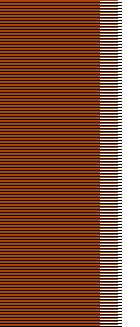

Microphone cablesMicrophone cables tend to be those snakelike things that you constantly trip over in a recording studio. Mic cables are pretty much one standard type (actually two, but one of them is usually not an option if we're talking about quality). I'll be explaining a bit about how to choose high quality microphone cables, as this is quite important for the recorded sound quality. Unbalanced cablesA.k.a. 2 connector cables. These are cables that are most commonly used with consumer audio equipment. They are also used in recording studios, but sparingly (like connecting a guitar and amp). You will run a higher risk of hiss, hum and other interference with unbalanced cables. These cable types include the RCA connectors. Balanced XLR microphone cablesA.k.a. 3 connector cables. These are shielded cables that provide a balanced signal. These are the preferred mic cables in any recording studio. Because of their design they have virtually no signal loss even in extremely long cables.
Browse microphone cables at zZounds.com Cable lengthThis might be of great importance or none at all, depending on the type of microphone you choose. If you have a low cost mic that uses a 2 connector cable, you want to keep the length of the cable as short as possible (shorter than 20 ft.). This is to prevent any signal loss. 3 connector cables (XLR cables) are shielded against electro-magnetic interference and can be quite long (several hundred feet) without significant signal loss.
Mic cable recommendationI would recommend the Mogami Gold Studio Microphone Cable. It's a little more expensive than the average cable, but the high accuracy, low noise and flexibility weighs up for it.
|
|||
|
All content and images, except where noted are Copyright
2004-2009 Build-a-recording-studio.com. Content and images from affiliates are copyright to their respective owners. This site is in affiliation with and is powered by
|

